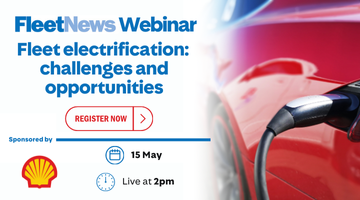Company drivers are being advised to follow a series of checks to ensure their vehicles are prepared for spring driving, which is characterised with regular and often heavy rain showers.
The AA Business Services advises that skidding accidents in wet conditions increase by almost 50%.
It points out that worn tyres contribute to about one-in-ten accidents in such conditions compared to one-in-50 accidents on dry roads.
The number of accidents increases by 267% in wet weather conditions.
“Spring brings its own set of challenges for business drivers.
"Many people underestimate the need for control in wet conditions after the snow and ice has melted, and so it is essential that business drivers take heed of this advice,” said Paul Holmes, head of risk management at AA Business Services.
"With April showers commonplace, it is important that business drivers take steps to ensure their vehicles are well equipped to cope with the wet weather.”
Interactive Driving Systems’ European managing director Andy Cuerden added: “The combination of sunshine and showers at this time of year spells real danger for drivers so it is vital they are well prepared and aware of the risks.”
AA Business Services has put together the following guide:
1. Slow down on wet roads - tyres can hydroplane on a layer of water, losing contact with the road and causing the vehicle to skid. In addition, flooded roads can flood out engines so it is vital that business drivers remain vigilant.
2. Keep your distance - cut your speed in bad weather. Slowing down from 70mph to around 50mph will dramatically reduce the impact of any accident.
3. Check your tyres – and check the pressure of your tyres once a month, and before every long trip.
4. Visibility – through the spring months dazzle from the low sun in the morning can be a particular problem. Improve vision by making sure your windscreen is clean – inside and out. Also check your windscreen washer fluid before you set off, top up with a proprietary additive that will help prevent freezing. Make sure your sunglasses are easily accessible.
5. Planning for wet weather conditions - when it is raining journeys will take longer. Get up at least ten minutes earlier than usual to give you time to prepare the car. Both time and fuel costs can also be cut by listening to traffic reports and avoiding driving in rush hour or on badly affected routes.















Login to comment
Comments
No comments have been made yet.